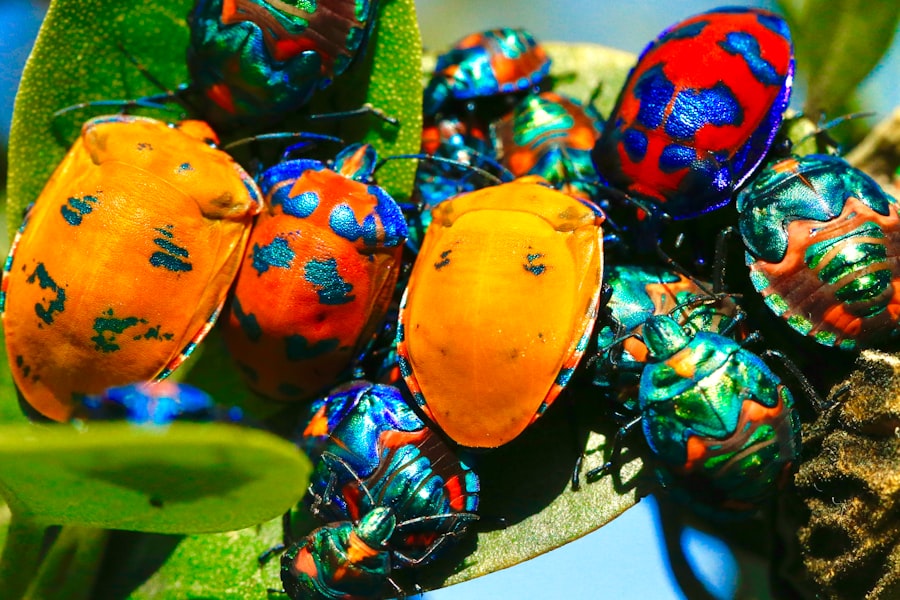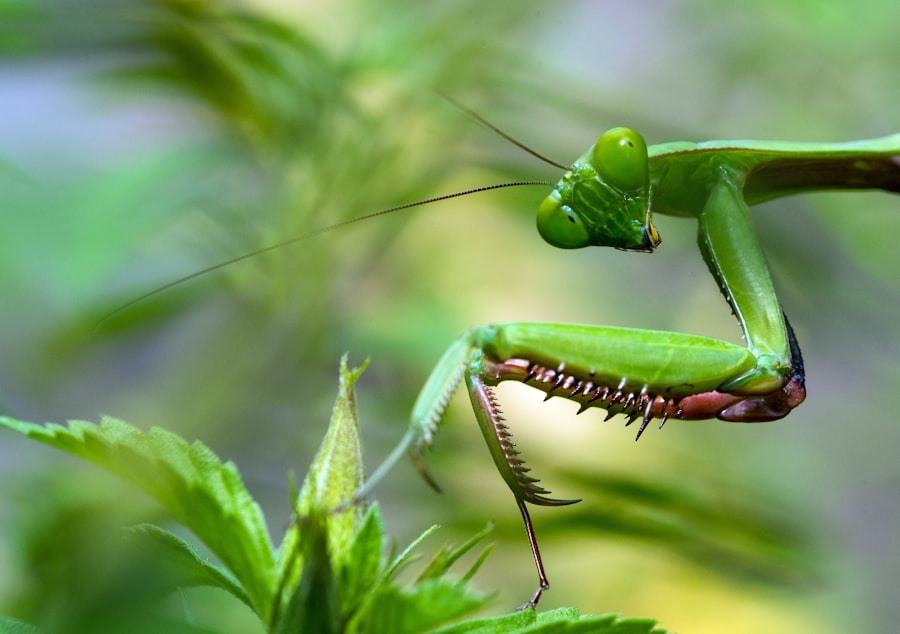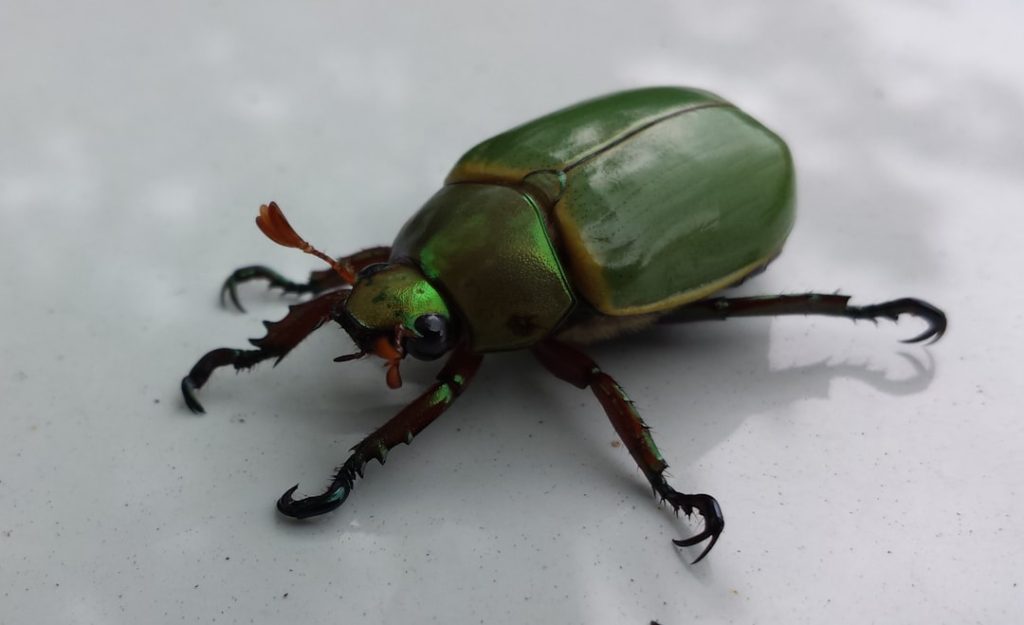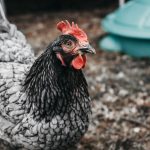Buffalo gnats, also known as black flies, are small, blood-sucking insects belonging to the Simuliidae family. These tiny pests are commonly found near rivers, streams, and other bodies of water, as their larvae require clean, running water to develop. Buffalo gnats are most active during the warmer months, typically from late spring to early fall.
They are known for their painful bites, which can cause irritation, swelling, and even allergic reactions in some individuals. These pests are attracted to carbon dioxide, heat, and moisture, making them particularly bothersome to humans and animals alike. Buffalo gnats are known for their swarming behavior, often gathering in large numbers near their breeding sites.
They are most active during the day, especially in the early morning and late afternoon. Female buffalo gnats require a blood meal to reproduce, while male buffalo gnats feed on nectar and other plant juices. Understanding the behavior and habits of buffalo gnats is crucial in developing effective strategies for controlling and managing infestations.
By knowing when and where these pests are most active, individuals can take proactive measures to protect themselves and their surroundings from buffalo gnat bites.
Table of Contents
Key Takeaways
- Buffalo gnats are small, biting insects that are attracted to moisture and carbon dioxide, making them a nuisance for both humans and animals.
- Creating a protective barrier, such as using fine mesh netting or wearing long-sleeved clothing, can help prevent buffalo gnats from biting.
- Natural repellents like essential oils, vinegar, and garlic can be effective in deterring buffalo gnats from infesting an area.
- Environmental controls, such as reducing standing water and maintaining proper drainage, can help minimize buffalo gnat populations.
- Keeping outdoor areas clean and free of debris can help reduce buffalo gnat breeding sites and attractants.
Creating a Protective Barrier
Securing Your Home and Outdoor Spaces
One of the most effective ways to prevent buffalo gnat bites is by creating a protective barrier around your home and outdoor living spaces. This can be achieved by installing fine mesh screens on windows and doors to keep buffalo gnats from entering indoor areas. Additionally, using mosquito netting or outdoor curtains can help create a barrier against these pests while still allowing for ventilation and natural light.
Personal Protective Measures
When spending time outdoors, wearing long-sleeved shirts, long pants, and hats can provide a physical barrier against buffalo gnat bites. Applying insect repellents containing DEET or picaridin to exposed skin can also help deter buffalo gnats from landing and biting.
Using Fans to Deter Buffalo Gnats
It’s important to note that buffalo gnats are weak fliers and are easily deterred by wind and air currents. By strategically placing fans around outdoor seating areas or patios, individuals can significantly reduce the risk of buffalo gnat bites. Creating a protective barrier against buffalo gnats is essential for maintaining a comfortable and enjoyable outdoor environment, especially during peak gnat season.
Utilizing Natural Repellents

In addition to chemical insect repellents, there are several natural alternatives that can help deter buffalo gnats and reduce the risk of bites. Essential oils such as citronella, eucalyptus, lavender, and peppermint have been found to have insect-repelling properties and can be used to create homemade repellent sprays. Mixing a few drops of these essential oils with water or a carrier oil like coconut or jojoba oil can create a natural repellent that can be applied to the skin and clothing.
Planting insect-repelling herbs such as basil, mint, and lemongrass in outdoor living areas can also help deter buffalo gnats and other biting insects. Another natural repellent option is the use of certain types of clothing treated with permethrin, a synthetic version of a natural insect repellent found in chrysanthemum flowers. Permethrin-treated clothing has been shown to effectively repel buffalo gnats and other biting insects for extended periods of time.
This can be particularly useful for individuals who spend a lot of time outdoors or engage in activities near bodies of water where buffalo gnats are prevalent. Utilizing natural repellents is a safe and eco-friendly way to protect against buffalo gnat bites while minimizing exposure to potentially harmful chemicals.
Implementing Environmental Controls
Implementing environmental controls is an important aspect of managing buffalo gnat infestations, especially in areas where these pests are abundant. One effective method is to reduce or eliminate potential breeding sites for buffalo gnats by removing standing water and debris from around the property. This includes cleaning out clogged gutters, removing leaf litter, and draining any containers or objects that collect water.
By eliminating stagnant water sources, individuals can significantly reduce the population of buffalo gnats in their immediate surroundings. Another environmental control method is the use of biological larvicides that target buffalo gnat larvae in their aquatic habitats. These larvicides contain naturally occurring bacteria that specifically target and kill the larvae of black flies without harming other aquatic organisms or wildlife.
Applying these larvicides to bodies of water where buffalo gnats breed can help reduce their numbers and prevent future infestations. Implementing environmental controls is an essential part of integrated pest management for buffalo gnats, as it focuses on disrupting their life cycle and reducing their overall population in a sustainable and environmentally friendly manner.
Maintaining Cleanliness
Maintaining cleanliness in and around the home is crucial for preventing buffalo gnat infestations and minimizing their impact on daily life. Keeping indoor spaces clean and free of clutter can help reduce hiding spots for buffalo gnats and other pests. Regularly vacuuming carpets, rugs, and upholstery can help remove any eggs or larvae that may have been brought indoors.
Additionally, keeping outdoor living areas tidy by regularly mowing the lawn, trimming vegetation, and removing debris can help reduce potential resting and breeding sites for buffalo gnats. Proper waste management is also important for controlling buffalo gnat populations, as decaying organic matter can attract these pests. Ensuring that garbage cans have tight-fitting lids and are emptied regularly can help prevent buffalo gnats from congregating around the property.
Properly maintaining compost piles and disposing of organic waste in sealed containers can also help minimize the presence of buffalo gnats in outdoor spaces. By maintaining cleanliness both indoors and outdoors, individuals can create an environment that is less hospitable to buffalo gnats and other nuisance insects.
Providing Shelter and Shade

Creating a Physical Barrier
Installing gazebos, pergolas, or umbrellas can provide shade from the sun while also creating a physical barrier against flying insects like buffalo gnats. These structures can be outfitted with mosquito netting or screens to further protect against pests while still allowing for airflow and visibility.
Natural Insect Repellents
Creating designated outdoor living spaces with adequate shelter can help individuals enjoy their time outdoors without constant harassment from buffalo gnats. Strategically placing plants that naturally repel insects around outdoor living areas can help deter buffalo gnats from congregating near the home. Plants such as marigolds, citronella grass, lavender, and rosemary are known for their insect-repelling properties and can be used to create natural barriers against pests.
Combining Shelter and Repellents
These plants not only add beauty to outdoor spaces but also serve as a functional way to minimize the presence of buffalo gnats and other biting insects. Providing shelter and shade in combination with natural repellents can significantly reduce the impact of buffalo gnat infestations on outdoor activities.
Monitoring and Managing Infestations
Monitoring and managing buffalo gnat infestations is an ongoing process that requires vigilance and proactive measures to keep populations in check. Regularly inspecting outdoor areas for signs of buffalo gnat activity, such as swarming behavior or resting sites, can help individuals identify potential problem areas and take appropriate action. Keeping track of peak activity times and locations can also help individuals plan outdoor activities around periods when buffalo gnats are less active.
In cases where buffalo gnat infestations are particularly severe, seeking professional pest control services may be necessary to effectively manage the problem. Pest control experts have the knowledge and tools to assess the extent of infestations and implement targeted control measures to reduce buffalo gnat populations. This may include the use of insecticide treatments in specific areas where buffalo gnats are concentrated or the application of larvicides to bodies of water where they breed.
Working with pest control professionals can provide individuals with peace of mind knowing that they are taking the necessary steps to address buffalo gnat infestations effectively. In conclusion, understanding the behavior and habits of buffalo gnats is essential for developing effective strategies to prevent bites and manage infestations. Creating a protective barrier using physical barriers, insect repellents, and environmental controls can help minimize the impact of buffalo gnats on outdoor living spaces.
Utilizing natural repellents such as essential oils and permethrin-treated clothing offers safe alternatives to chemical insect repellents while still providing effective protection against these pests. Implementing environmental controls through habitat modification and biological larvicides can help reduce buffalo gnat populations in a sustainable manner. Maintaining cleanliness indoors and outdoors is crucial for preventing infestations and minimizing potential resting sites for buffalo gnats.
Providing shelter and shade in combination with natural repellents can create comfortable outdoor living spaces while deterring buffalo gnats from congregating near the home. Finally, monitoring infestations and seeking professional pest control services when necessary are important steps in effectively managing buffalo gnat populations. By implementing these strategies, individuals can enjoy their time outdoors without constant annoyance from these pesky insects.
If you’re looking for tips on how to keep buffalo gnats away from your chickens, you may also be interested in learning about how to insulate a chicken coop. Insulating your coop can help create a more comfortable and pest-free environment for your chickens. Check out this article on how to insulate a chicken coop for more information on this topic.
FAQs
What are buffalo gnats?
Buffalo gnats, also known as black flies, are small biting insects that are commonly found near bodies of water. They are known for their painful bites and can be a nuisance to both humans and animals.
Why are buffalo gnats a problem for chickens?
Buffalo gnats can be a problem for chickens as they can cause irritation and discomfort with their bites. In severe cases, buffalo gnats can cause anemia and even death in chickens due to excessive blood loss.
How can I keep buffalo gnats away from my chickens?
There are several methods to keep buffalo gnats away from chickens, including using insect repellents specifically designed for poultry, providing shaded areas for chickens to avoid direct exposure to buffalo gnats, and using fans to create airflow that can deter buffalo gnats.
Are there any natural remedies to keep buffalo gnats away from chickens?
Some natural remedies to keep buffalo gnats away from chickens include planting insect-repelling herbs such as lavender and mint near the chicken coop, using essential oils like citronella and eucalyptus as a natural insect repellent, and providing chickens with dust baths using diatomaceous earth, which can help deter buffalo gnats.
What are the signs that my chickens are being affected by buffalo gnats?
Signs that your chickens are being affected by buffalo gnats include restlessness, excessive scratching and pecking at their skin, and visible bite marks or welts on their bodies. In severe cases, chickens may show signs of anemia such as weakness and pale combs and wattles.
Meet Walter, the feathered-friend fanatic of Florida! Nestled in the sunshine state, Walter struts through life with his feathered companions, clucking his way to happiness. With a coop that’s fancier than a five-star hotel, he’s the Don Juan of the chicken world. When he’s not teaching his hens to do the cha-cha, you’ll find him in a heated debate with his prized rooster, Sir Clucks-a-Lot. Walter’s poultry passion is no yolk; he’s the sunny-side-up guy you never knew you needed in your flock of friends!







